The Illuminated Lotus Sutra Project
From the archive, we present an article with images from the work of Roberta Mansell who spent many years illuminating perhaps the most famous Mahayana sutra - The Lotus Sutra.
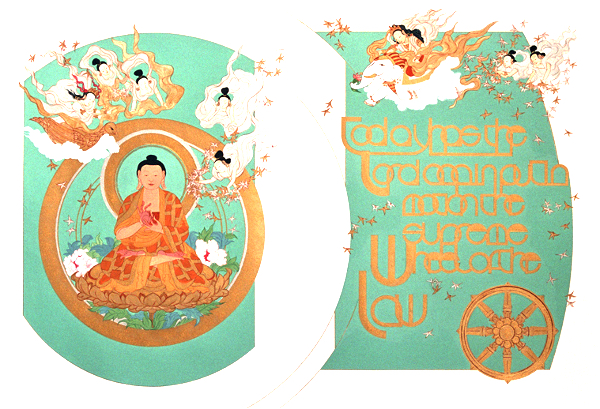
Image from Illuminated Lotus Sutra illustrtated by Roberta Mansell
by Roberta Mansell
The Zen Gateway is delighted to welcome the work of Roberta Mansell who for over eighteen years has been illustrating one of the great spiritual works of Mahayana Buddhism – The Lotus of the Complete Dharma otherwise known in English as – The Lotus Sutra.
Roberta trained for many years under Ven. Myokyo-ni in zazen meditation and daily life practice. She has also worked closely with scholar Eric Cheetham who taught a series of courses for The Buddhist Society in London and at their Summer School in Cirencester, Gloucestershire. Mr Cheetham has also published books on early and late Indian Buddhism and has recently completed a history of Chinese Buddhism.
In addition to her formal art training in the West she also trained in the traditional art of Tibetan Buddhist drawing proportions of the Buddha and other major deities. Her teacher in Nepal is from the Tibetan Kagyu tradition.
As well as working on the project Roberta also finds time to give talks on her work to members of the Hampshire Buddhist Society as well as to the Buddhist Society. She has written articles published in their journal - The Middle Way.
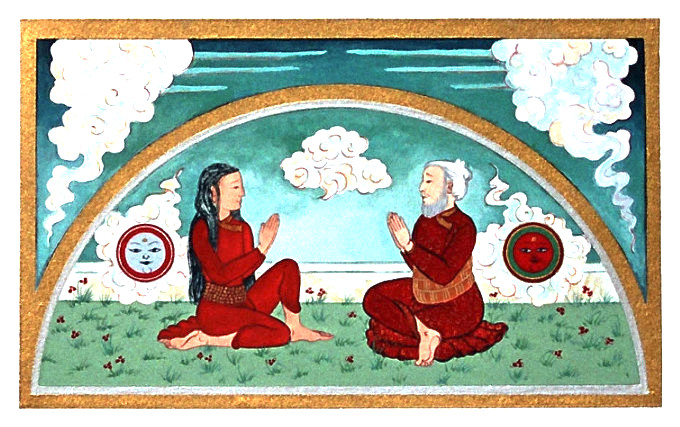 ©
© by Roberta Mansell
CHAPTER ONE
We start at the beginning, the first chapter of the Saddharma-Pundarika, The Lotus of the True Law otherwise known commonly in English as The Lotus Sutra.
Eric Cheetham prefers the translation as - The Lotus of the True Dharma or The Lotus of the Complete Dharma. These translations have the connotation of an exalted status which some schools of Buddhism such as Tian Tai and Nicherin give to this sutra. The Tian Tai school (known as Tendai in Japanese), in their five-fold classification of all the Buddhist sutras regard the Lotus Sutra as the consummation of the Mahayana unfoldment.
Historians agree that the Lotus Sutra evolved gradually from the earliest period of Buddhism and was written down over the period between 100 B.C.E. and 100 C.E. and contains many themes common to Mahayana sutras such as the revelation that the supreme teaching of the Buddha is that all beings will attain Buddhahood; the supremacy of the Bodhisattva path therefore and in particular what is known as the ‘Ekayana’ or One-Way. This last teaching emphasises that all the teachings both early and the developed teachings of the Mahayana are stages on one path to Buddhahood.
There is a venerable tradition which has it that the title of a sutra should first be explained.
In the case of the Lotus the tradition is particularly apt because the Sanskrit words of the title have possible meanings which is not often brought out. The lotus (pundarika) is a plant with a special symbolic meaning of purity from the very earliest times. The Buddha likened himself to a lotus in the Pali texts where he denied he was a human being (Anguttara II 37-39). He said that the Tathagata (lit. ‘Thus come’ another name for the Buddha), is like the lotus, which is born in the water but rises up through it and flowers untouched and unsoiled by the water. In the title of this text the “Good Dharma” is like the lotus. Thus the “Good Dharma” is born and rooted in the world (and in the earlier Mainstream teachings) but rises above before fully flowering. The “Good Dharma” (saddharma) of the title also has a fitting connotation. All shades of the Buddhist tradition believe that the teaching of every Buddha passes through three successive phases.
The first phase is known as the time of ‘Good Dharma’ (saddharma) and like the following phases lasts for 500 years. The next phase begins the decline of the teaching which by the end suffers from many errors. The final phase sees the disintegration and loss of the teachings completely. Given that the Lotus sutra was compiled near the end of one phase and into the beginning of the second phase would suggest that it is not the ‘whole’ teaching. However because the teaching is lotus-like it rises above the decay and retains the purity of its message for those whose eyes are but ‘little covered with dust’. This retention of the wholeness of the Dharma can then be aligned with a renewed turning of the Wheel of the Dharma at a time when the original turning of the wheel is seen to be on the wane.
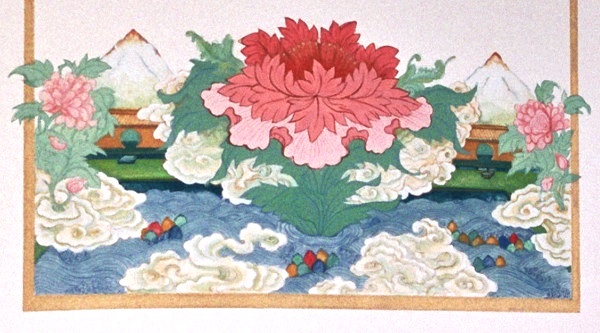 ©
© by Roberta Mansell
The text is a mixture of prose and verse and sustains a continuous narrative. In the Lotus the stories are enriched with an unusual wealth of detail and told at length in a way that makes them memorable.
The first chapter is called The Introductory and its content can be summarised as follows:
Sakyamuni is residing on the Vulture Peak at Rajagriha surrounded by a host of Bodhisattvas, gods and laypeople as well as many of the original arhats.
After preaching to the Assembly the Buddha enters Samadhi ( a state of one-ness developed through meditation practices). While he is in samadhi a ray of light from his brow illuminates all the Buddha-fields of one quarter of the four directions to the whole assembly. They all see the Buddhas of these worlds preaching to their listeners and all the levels of those other worlds could be seen from the highest gods to the deepest hells.
Maitreya, the Buddha-to-come voices the unspoken question of all present when he asks Manjusri, the Bodhisattva who represents the Buddha’s Wisdom, what the display means?
Manjusri relates a jataka story (a story from Shakyamuni’s previous lives), of the long distant past and says that the display presages a preaching of the Lotus Sutra. He remembers the long past occasion under another Buddha when Maitreya and many of the present assembly were there also, though they have forgotten it now.
Let’s look at some quotations from the Kern edition from this chapter along with some of the accompanying illustrations.
SADDHARMA-PUNDARÎKA
OR
THE LOTUS OF THE TRUE LAW.
HOMAGE TO
ALL THE BUDDHAS AND BODHISATTVAS.
CHAPTER I.
INTRODUCTORY.
Thus have I heard.
Once upon a time the Lord was staying at Râgagriha, on the Gridhrakûta mountain, with a numerous assemblage of monks, twelve hundred monks, all of them Arhats, stainless, free from depravity, self-controlled, thoroughly emancipated in thought and knowledge, of noble breed, (like unto) great elephants,
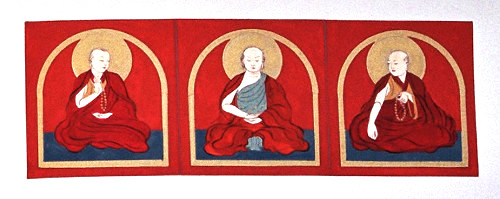 ©
© by Roberta Mansell
having done their task, done their duty, acquitted their charge, reached the goal; in whom the ties which bound them to existence were wholly destroyed, whose minds were thoroughly emancipated by perfect knowledge, who had reached the utmost perfection in subduing all their thoughts; who were possessed of the transcendent faculties…
(further) with eighty thousand Bodhisattvas, all unable to slide back, endowed with the spells of supreme, perfect enlightenment, firmly standing in wisdom; who moved onward the never deviating wheel of the law; who had propitiated many hundred thousands of Buddhas; who under many hundred thousands of Buddhas had planted the roots of goodness, had been intimate with many hundred thousands of Buddhas, were in body and mind fully penetrated with the feeling of charity; able in communicating the wisdom of the Tathâgatas; very wise, having reached the perfection of wisdom; renowned in many hundred thousands of worlds; having saved many hundred thousand myriads of kotis of beings…
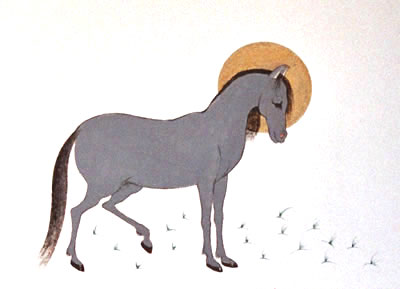 ©
© by Roberta Mansell
Here we feel the ancientness of the Buddha and the Dharma.
With them were also the sixteen virtuous men; which were named; besides eighty thousand Bodhisattvas, among whom the fore-mentioned were the chiefs; further Sakra, the ruler of the celestials, with twenty thousand gods, his followers, such as the god Kandra (the Moon), the god Sûrya (the Sun), the god Samantagandha (the Wind),
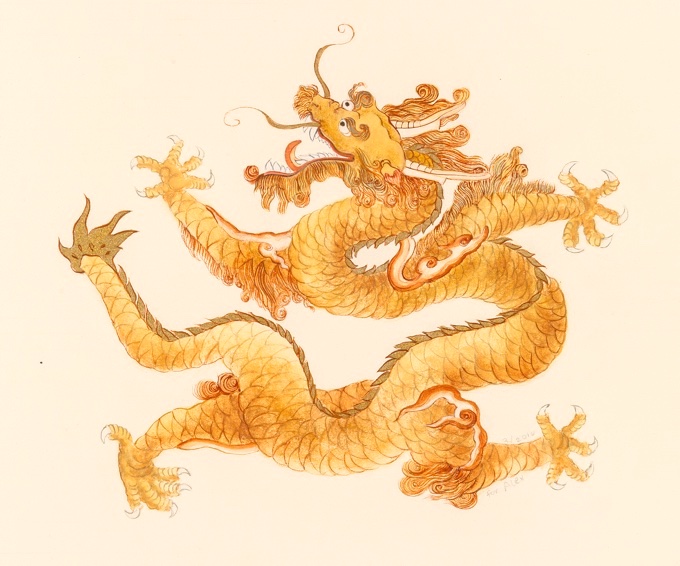 ©
© by Roberta Mansell
and others; further, the four great rulers of the cardinal points with thirty thousand gods in their train, the god Îsvara and the god Mahesvara, each followed by thirty thousand gods; further, Brahma Sahâmpati and his twelve thousand followers,
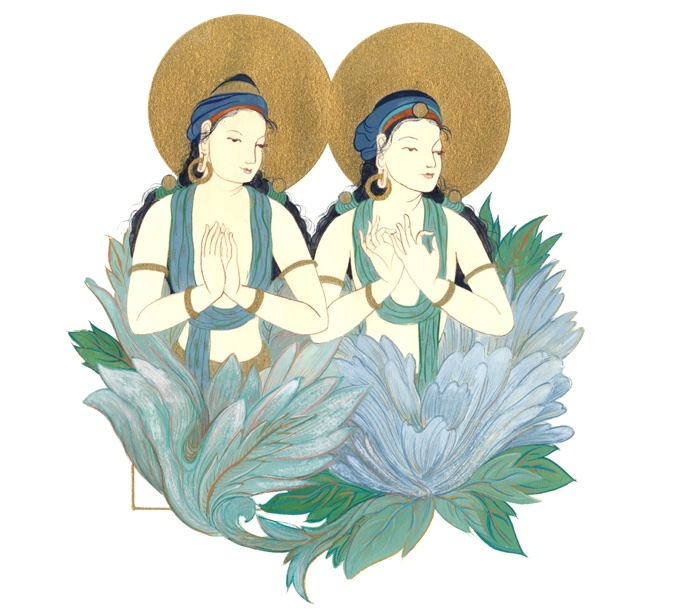 ©
© by Roberta Mansell
the Brahmakâyika gods with the other twelve thousand Brahmakâyika gods; together with the eight Nâga kings and many hundred thousand myriads of kotis of Nâgas in their train, further, the four Kinnara kings with many hundred thousand myriads of kotis of followers, besides, the four divine beings (called) Gandharvakâyikas with many hundred thousand Gandharvas in their suite, further, the four chiefs of the demons followed by many hundred thousand myriads of kotis of demons, along with the four Garuda chiefs followed by many hundred thousand myriads of kotis of Garudas.
We get the point- no one and no thing is excluded or rejected!
 ©
© by Roberta Mansell




